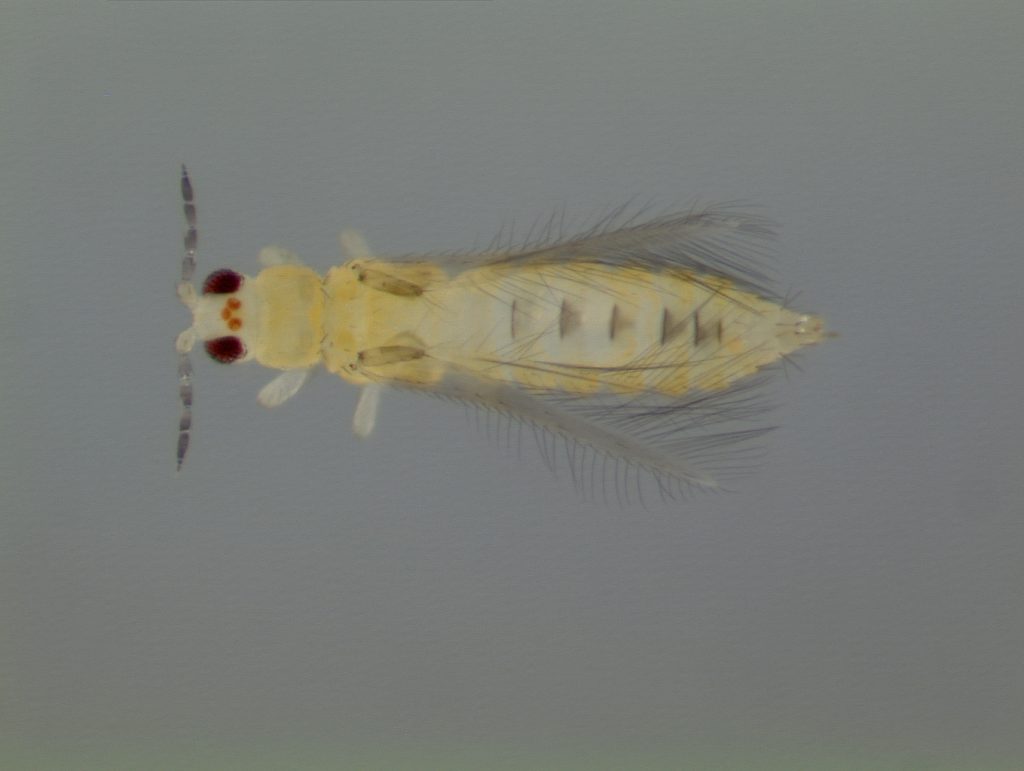
By Clint Thompson
It is not a question of if chilli thrips will be a problem for Florida strawberry growers this year but when will they be? According to Sriyanka Lahiri, UF/IFAS Assistant Professor of Entomology and Nematology at the Gulf Coast Research and Education Center, producers can expect to see infestations early in the season, not long after plants go in the ground.
“Thrips still remain the main problem. For growers other than Florida, it’s flower thrips, western flower thrips particularly. In Florida it’s chilli thrips, and they were really bad last year in some fields. This year we expect nothing different,” Lahiri said.
“We expect chilli thrips to show up really early in the season. They’re able to do that because they feed on the leaves of the strawberry plants. That’s why they’re able to show up as early as possible and then colonize portions of the field even before any flower thrips appear.”
What are Thrips?
Thrips are very small insects that range only in 1 mm to 4 mm in length. They are very active and mobile. In a new University of Florida study, research shows chilli thrips tend to congregate in one area for about two weeks, then move and infect nearby plants.
This can be advantageous for growers who can time their insecticides once they detect chilli thrips are present.
“Spinetoram is definitely the most effective product out there for thrips management, especially because it controls both the adults and the immature stages of the thrips up to three weeks,” Lahiri said.
Spinetoram is used in Radiant®, a Group 5 insecticide. Exirel® and SivantoTM prime are also effective insecticides. It is very important to rotate these products and not to be applied more than the allowable label rates.









